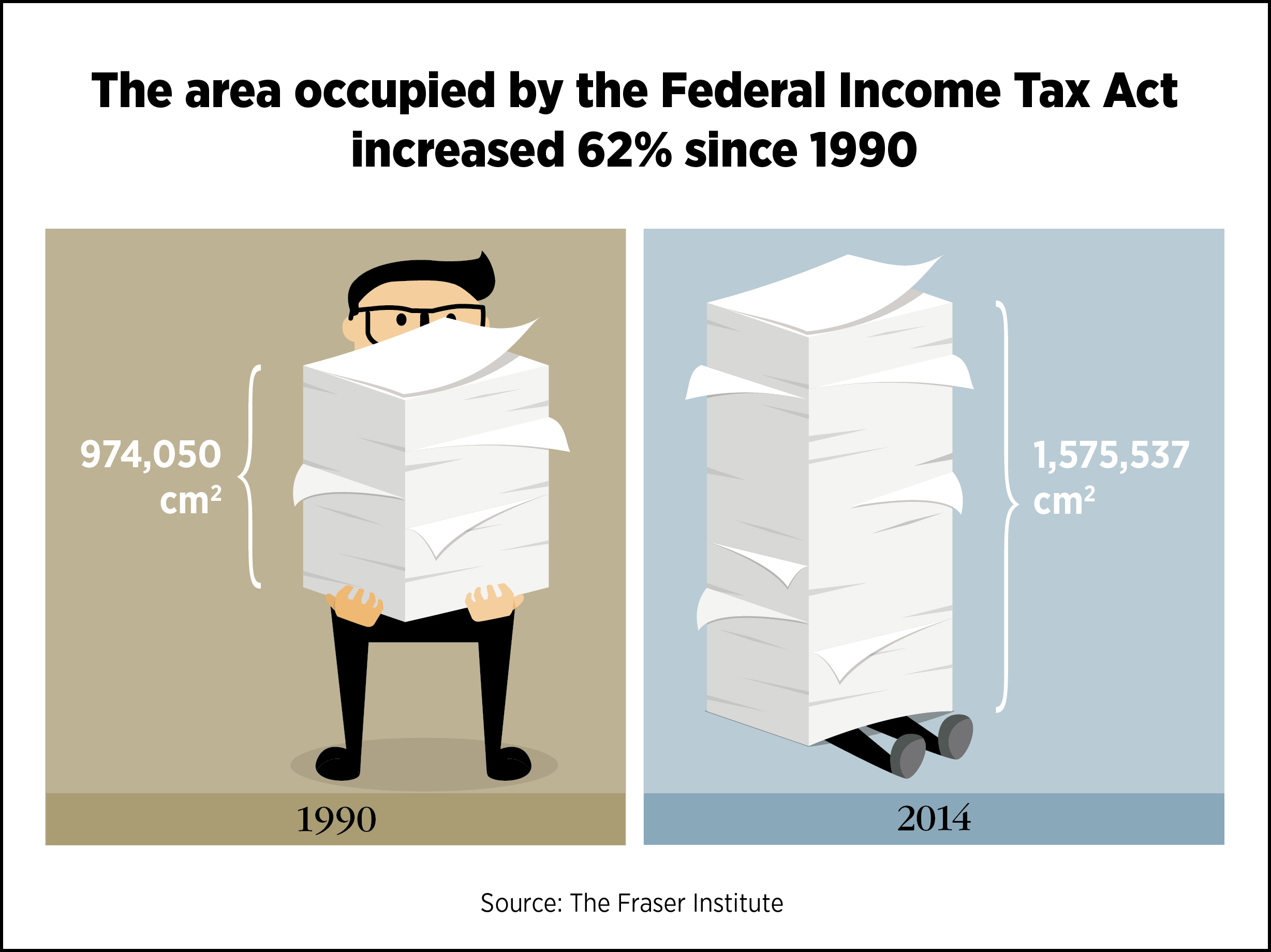Study
| EST. READ TIME 2 MIN.With the income tax deadline looming, Canadians challenged by an increasingly complex tax system
Canadian families and businesses incur significant costs complying with the tax system. Those costs include direct spending on items such as accountants, lawyers, and computer software, as well as the financial cost of the time it takes to compile the materials and complete the forms. Governments also incur costs to administer and collect taxes. These costs are driven in part by the complexity of the tax system. This study measures the evolution of tax complexity and finds that, according to various empirical measurements, the federal tax system in Canada has generally become more complex over time.
The study uses three broad categories of indicators for the empirical measurements: tax expenditures, tax legislation, and tax guides. Each indicator measures a different aspect of tax complexity. Between 1990 and 2014, the text area occupied by the Income Tax Act and regulations increased 62%, from 974,050 cm² to 1,575,537 cm². It is important to measure text area because while the number of pages declined by 4%, page size increased 69% over the same period.
Regardless of the indicator used, all show an increase in federal tax complexity over a 20-year period. Of particular note is the similar increase in all the indicators in recent years. From 2000 (or 2001) to 2011 (or 2014), the number of credits, deductions, exemptions, exclusions, and other preferences (otherwise known as federal income tax expenditures) increased 22%, the text area of tax legislation increased 19%, and the size of the federal personal income tax guide increased 25%.

Share
-

François Vaillancourt
François Vaillancourt is an emeritus professor in the department of economic sciences at the University of Montreal where he taughtfrom 1976 to 2011. He completed his Ph.D. in economics at Queen’s University in 1978 and received a Doctorate honoris causa from the University of Geneva in 2021 for his pioneering work in the economics of language. Professor Vaillancourt was a Fulbright scholar in 2007 in Atlanta and was elected to the Royal Society of Canada in 2009. He was the Shastri lecturer in India has been a guest lecturer at the University of Toronto and Australian National University and a research scholar at the Institute for Research in Public Policy (1992-2000) and the C.D. Howe Institute (2000-2003). Professor Vaillancourt was also a research coordinator(Income distribution and Income security) for the MacDonald Commission (1983-1986). He has consulted for a number of international organizations such as the IMF, the World Bank, OECD, UNDP and national agencies such as Statistics Canada, Finance Canada, and the Seguin Commission. His fields of research include linguistic policies, intergovernmental financial relations, and tax compliance costs. He has published on a wide variety of issues including equalization in federal countries, education, minority language policies, federalism, and taxation. Professor Vaillancourt is widely acknowledged as one of the pre-eminent scholars on the issue of tax compliance and administrative costs.… Read more Read Less… -

Charles Lammam
-

Marylène Roy
Research Assistant, CIRANOMarylène Roy holds a BSc (Econ) from Université de Montréal and is currently studying for a MSc at HEC Montréal. She is a research assistant at CIRANO.
Related Topics
Related Articles
By: Ben Eisen and Jake Fuss
By: Jake Fuss and Grady Munro
By: Ben Eisen and Jake Fuss
By: Ben Eisen and Jake Fuss